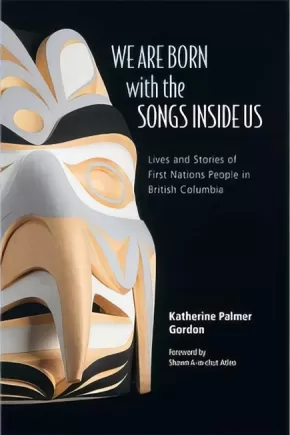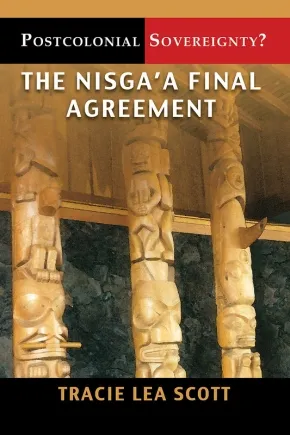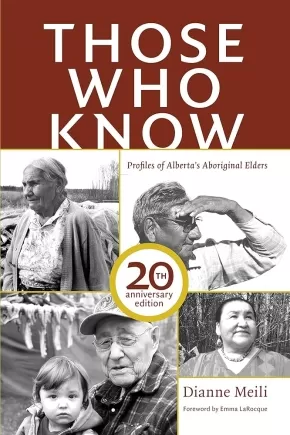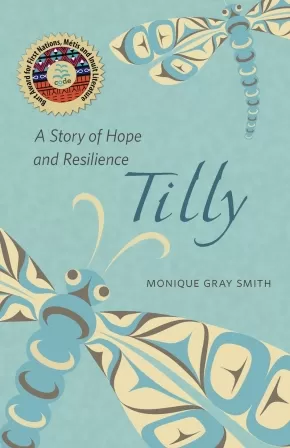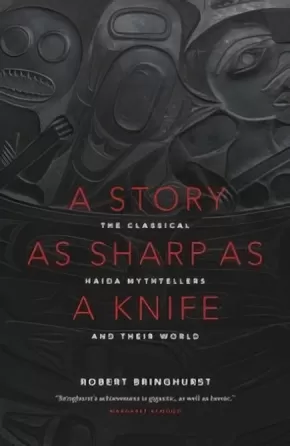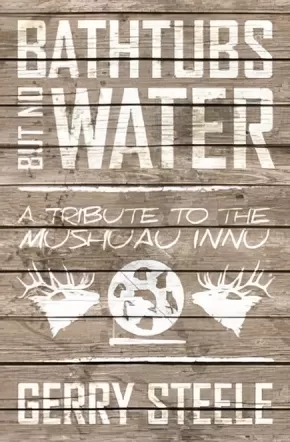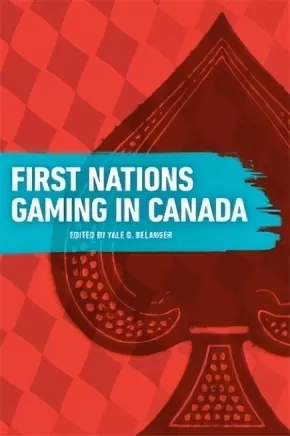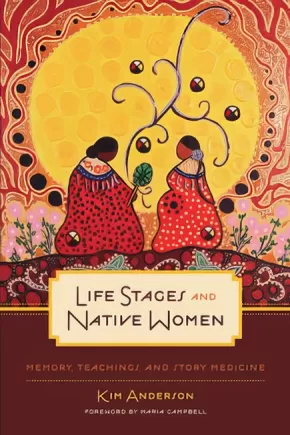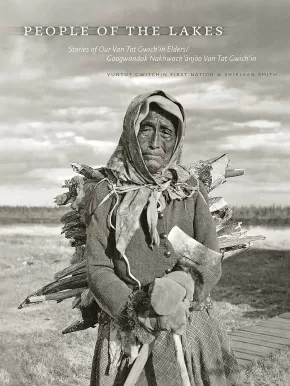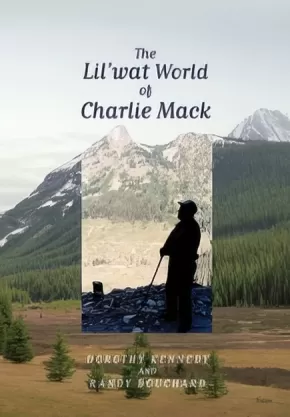Communities
Synopsis:
First Nations are the fastest growing population in the country. There are thousands upon thousands of young First Nations people growing up today who, together with the kind of individuals whose stories are told in this book, represent a future for this country that is brighter than it has been for a long, long time.--from the foreword by Shawn A-in-chut Atleo, National Chief of the Assembly of First Nations
Since 2004, journalist Katherine Palmer Gordon has interviewed dozens of young First Nations people living in British Columbia--artists and community leaders, comedians and consultants, musicians and lawyers, people who are household names and those known only within their own communities. We Are Born with the Songs Inside Us collects sixteen candid stories gleaned from those interviews, stories of people who share an unshakeable belief in the importance of their cultural heritage to their well-being, to their success at what they do, and to their everyday lives.
Included are Kim Baird, former chief of the Tsawwassen First Nation; Lisa Webster-Gibson, spoken word artist and rock-and-roll drummer with Delaware-Mohawk and Scottish-Canadian heritage who lives and works on Gabriola Island as an Environmental Assessment Professional; and John Marston (Qap'u'luq), an artist and storyteller from the Chemainus First Nation who learned to carve from his father. "What I put into each piece," he says, in his interview with Gordon, "is 100 percent me."
Shattering stereotypes, We Are Born with the Songs Inside Us gathers the thoughts and hopes of young native people living in twenty-first century Canada. Each has a compelling, meaningful story that deserves to be told, understood and, above all, celebrated.
Authenticity Note: The author of this book is not Indigenous; however, those who contributed the stories for the book are Indigenous. It is up to readers to determine if this will work as an authentic text for their purposes.
Synopsis:
The 1999 Nisga'a agreement covering part of NW British Columbia was truly the first postcolonial land claims settlement in Canada, the author argues. The book analyzes the impact the agreement has on federal/provincial/First Nations relations and in a concise manner examines the major terms of the agreement. She notes that the agreement marks a major departure from previous agreements with First Nations and outlines the opposition, including two court challenges, mounted against the agreement.
Synopsis:
The elders in Those Who Know have devoted their lives to preserving the wisdom and spirituality of their ancestors. Despite insult and oppression, they have maintained sometimes forbidden practices for the betterment of not just their people, but all humankind. First published in 1991, Dianne Meili’s book remains an essential portrait of men and women who have lived on the trapline, in the army, in a camp on the move, in jail, in residential schools, and on the reserve, all the while counselling, praying, fasting, healing, and helping to birth further generations. In this 20th anniversary edition of Those Who Know, Meili supplements her original text with new profiles and interviews that further the collective story of these elders as they guide us to a necessary future, one that values Mother Earth and the importance of community above all else.
Additional Information
312 pages | 6.00" x 9.00" | Paperback
Synopsis:
Tilly has always known she’s part Lakota on her dad’s side. She’s grown up with the traditional teachings of her grandma, relishing the life lessons of her beloved mentor. But it isn’t until an angry man shouts something on the street that Tilly realizes her mom is Aboriginal, too—a Cree woman taken from her own parents as a baby.
Tilly feels her mother’s pain deeply. She’s always had trouble fitting in at school, and when her grandma dies unexpectedly, her anchor is gone. Then Abby, a grade seven classmate, invites her home for lunch and offers her “something special” to drink. Nothing has prepared Tilly for the tingling in her legs, the buzz in her head and the awesome feeling that she can do anything. From then on, partying seems to offer an escape from her insecurities. But after one dangerously drunken evening, Tilly knows she has to change. Summoning her courage, she begins the long journey to finding pride in herself and her heritage. Just when she needs it most, a mysterious stranger offers some wise counsel: “Never question who you are or who your people are. It’s in your eyes. I know it’s in your heart.”
Loosely based on author Monique Gray Smith’s own life, this revealing, important work of creative non-fiction tells the story of a young Indigenous woman coming of age in Canada in the 1980s. With compassion, insight and humour, Gray Smith illuminates the 20th-century history of Canada’s First Peoples—forced displacement, residential schools, tuberculosis hospitals, the Sixties Scoop. In a spirit of hope, this unique story captures the irrepressible resilience of Tilly, and of Indigenous peoples everywhere.
Awards
- 2014 Burt Award Winner
Reviews
“What a gorgeous read! Reminiscent of Lee Maracle’s Will’s Garden and Ruby Slipperjack’s Little Voice, Tilly will bring strength, comfort and peace to all who read it. Let it discover and inspire you, too. Wow! I've been waiting for a book like this for years. Mahsi cho, Monique Gray Smith, for digging so deep to create something so loving and nurturing for the world.” —Richard Van Camp, author of The Lesser Blessed and The Moon of Letting Go
"Gray Smith intricately pieces together stories, traditional teachings and hard-earned personal wisdom, creating a hand-stitched quilt you can’t help but wrap yourself in—a quilt filled with optimism and the assurance that no matter how lost we are, hope, love and guidance surround us at every turn. Delicate with the handling of mature details, but fiercely candid with emotion, Tilly is an ideal resource not only for youth, but also for those who are easily triggered, while its universality will be appreciated by a wider audience. A brave new voice ready to take her place among the great contemporary storytellers, Gray Smith breaks her own trails as she explores what it means to be Indigenous in a modern world." —Christy Jordan-Fenton, author of Fatty Legs, A Stranger at Home and When I Was Eight
Educator Information
Recommended Ages: 15-18.
Grades 10-12 English First Peoples resource for units on Childhood through the Eyes of Indigenous Writers and Exploring Text through Local Landscape.
Additional Information
208 pages | Ages 14+
Synopsis:
A seminal collection of Haida myths and legends; now in a gorgeous new package.
The linguist and ethnographer John Swanton took dictation from the last great Haida-speaking storytellers, poets and historians from the fall of 1900 through the summer of 1901. Together they created a great treasury of Haida oral literature in written form.
Having worked for many years with these century-old manuscripts, linguist and poet Robert Bringhurst brings both rigorous scholarship and a literary voice to the English translation of John Swanton's careful work. He sets the stories in a rich context that reaches out to dozens of native oral literatures and to myth-telling traditions around the globe.
Attractively redesigned, this collection of First Nations oral literature is an important cultural record for future generations of Haida, scholars and other interested readers. It won the Edward Sapir Prize, awarded by the Society for Linguistic Anthropology, and it was chosen as the Literary Editor's Book of the Year by the Times of London.
Bringhurst brings these works to life in the English language and sets them in a context just as rich as the stories themselves one that reaches out to dozens of Native American oral literatures, and to mythtelling traditions around the world.
Synopsis:
In 1967, the Mushuau Innu — the Aboriginal people of Labrador — were resettled on Davis Inlet by the Canadian government. Originally a land-based people, this move to the coast created cultural, economic and spiritual upheaval, and Davis Inlet became synonymous with shocking substance abuse and suicide rates. In Bathtubs but No Water, Gerry Steele offers the reader a participant observer’s perspective on Davis Inlet. An employee of the federal government working with the Mushuau Innu since 1993, Steele explores their oral history of the resettlement process, substance abuse and deaths, and argues that these problems are a direct result of the government’s lack of respect for Aboriginal peoples. In 1992, the Innu tried to regain responsibility for their future, focusing on the traditions and strengths of their own community, but government bureaucracy would not support this partnership. Steele urges the government to engage in respectful partnerships with Aboriginal communities in order to achieve positive change.
Additional Information
|
Synopsis:
Many promote Reconciliation as a “new” way for Canada to relate to Indigenous Peoples. In Dancing on Our Turtle’s Back: Stories of Nishnaabeg Re-Creation, Resurgence, and a New Emergence activist, editor, and educator Leanne Simpson asserts reconciliation must be grounded in political resurgence and must support the regeneration of Indigenous languages, oral cultures, and traditions of governance.
Simpson explores philosophies and pathways of regeneration, resurgence, and a new emergence through the Nishnaabeg language, Creation Stories, walks with Elders and children, celebrations and protests, and meditations on these experiences. She stresses the importance of illuminating Indigenous intellectual traditions to transform their relationship to the Canadian state.
Challenging and original, Dancing on Our Turtle’s Back provides a valuable new perspective on the struggles of Indigenous Peoples.
Additional Information
168 pages | 5.50" x 8.50" | Paperback
Synopsis:
While games of chance have been part of the Aboriginal cultural landscape since before European contact, large-scale commercial gaming facilities within First Nations communities are a relatively new phenomenon in Canada. First Nations Gaming in Canada is the first multidisciplinary study of the role of gaming in indigenous communities north of the 49th parallel. Bringing together some of Canada’s leading gambling researchers, the book examines the history of Aboriginal gaming and its role in indigenous political economy, the rise of large-scale casinos and cybergaming, the socio-ecological impact of problem gambling, and the challenges of labour unions and financial management. The authors also call attention to the dearth of socio-economic impact studies of gambling in First Nations communities while providing models to address this growing issue of concern.
Synopsis:
A rare and inspiring guide to the health and well-being of Aboriginal women and their communities.
The process of "digging up medicines" - of rediscovering the stories of the past - serves as a powerful healing force in the decolonization and recovery of Aboriginal communities. In Life Stages and Native Women, Kim Anderson shares the teachings of fourteen elders from the Canadian prairies and Ontario to illustrate how different life stages were experienced by Métis, Cree, and Anishinaabe girls and women during the mid-twentieth century. These elders relate stories about their own lives, the experiences of girls and women of their childhood communities, and customs related to pregnancy, birth, post-natal care, infant and child care, puberty rites, gender and age-specific work roles, the distinct roles of post-menopausal women, and women's roles in managing death. Through these teachings, we learn how evolving responsibilities from infancy to adulthood shaped women's identities and place within Indigenous society, and were integral to the health and well-being of their communities. By understanding how healthy communities were created in the past, Anderson explains how this traditional knowledge can be applied toward rebuilding healthy Indigenous communities today.
Additional Information
|
Synopsis:
Dr. Herman Michell has produced a practical, easy to follow, reader designed to provide both examples and suggestions so as to allow readers the ability to establish “a starting base from which they can develop their own ways of working with Elders…” (p. ii).
By exploring key Indigenous concepts, [i.e., definitions of Indigenous identity in Canada, Indigenous People and Indigenous knowledge; Indigenous worldview; who are Indigenous elders; etc.], Dr. Michell hopes to build cross-cultural bridges.
This book is a must read for anyone wishing to quickly obtain an understanding of what underlies Indigenous ways of perceiving.
Additional Information
Pages: 112 | Size: 6″ x 9
Synopsis:
The adoption of Aboriginal children into non-Aboriginal families has a long and contentious history in Canada. Life stories told by First Nations people reveal that the adoption experience has been far from positive for these communities and has, in fact, been an integral aspect of colonization. In an effort to decolonize adoption practices, the Yellowhead Tribal Services Agency (YTSA) in Alberta has integrated customary First Peoples’ adoption practices with provincial adoption laws and regulations. Introducing this unique agency, the authors outline the history of First Nations adoptions and, through an interview with a YTSA Elder, describe the adoption ceremonies offered at YTSA. Themes that emerged from interviews with adoptive parents and youth who have been adopted through this new integrated practice are also explored, and important recommendations for policy and practice in First Nations adoption are offered.
Synopsis:
Indigenous media challenges the power of the state, erodes communication monopolies, and illuminates government threats to indigenous cultural, social, economic, and political sovereignty. Its effectiveness in these areas, however, is hampered by government control of broadcast frequencies, licensing, and legal limitations over content and ownership.
Indigenous Screen Cultures in Canada explores key questions surrounding the power and suppression of indigenous narrative and representation in contemporary indigenous media. Focusing primarily on the Aboriginal Peoples Television Network, the authors also examine indigenous language broadcasting in radio, television, and film; Aboriginal journalism practices; audience creation within and beyond indigenous communities; the roles of program scheduling and content acquisition policies in the decolonization process; the roles of digital video technologies and co-production agreements in indigenous film making; and the emergence of Aboriginal cyber-communities.
Additional Information
200 pages | 6.00" x 9.00"
Synopsis:
Many people have a mental picture of the Canadian north that juxtaposes beauty with harshness. For the Van Tat Gwich'in, the northern Yukon is home, with a living history passed on from elders to youth. This book consists of oral accounts that the Elders have been recording for 50 years, representing more than 150 years of their history, all meticulously translated from Gwich'in. Yet this is more than a gathering of history; collaborator Shirleen Smith provides context for the stories, whether they are focused on an individual or international politics. Anthropologists, folklorists, ethnohistorians, political scientists, economists, members of First Nations, and readers interested in Canada's northernmost regions will find much to fascinate them.
Additional Information
|
Synopsis:
Following the removal of the gray whale from the Endangered Species list in 1994, the Makah tribe of northwest Washington State and the Nuu-chah-nulth Nation of British Columbia announced that they would revive their whale hunts. The Makah whale hunt of 1999 was met with enthusiastic support and vehement opposition. A member of the Nuu-chah-nulth First Nation, Charlotte Coté offers a valuable perspective on the issues surrounding Indigenous whaling. Her analysis includes major Aboriginal studies and contemporary Aboriginal rights issues, addressing environmentalism, animal rights activism, anti-treaty conservatism, and the public’s expectations about what it means to be “Indian.”
Synopsis:
Early in their ethnographic work, Randy Bouchard and Dorothy Kennedy were privileged to meet Charlie Mack. Born on the Mount Currie Reserve in 1899, he was a fascinating character and a font of wisdom, exemplifying by his way of life, his skills in trapping and canoe-making, and his knowledge of the history of his people, the living world of the Lil’wat, which the young ethnologists were able to record on tape and in their notes and photographs. Most important among what Charlie Mack gave them was a wide corpus of stories; he was a master storyteller, holding his listeners spellbound with his animated and dramatic delivery in both Lil’wat and English.
Charlie Mack’s stories were originally recorded in his native language as part of a systematic government-sponsored effort to create public awareness of the threatened indigenous languages of British Columbia and Washington State, and were eventually published as a highly popular translated and edited collection, Lillooet Stories (1977), by the British Columbia Archives.
More time spent with Charlie Mack before his death in 1990 revealed to Kennedy and Bouchard that his worldview embedded a moral code, information about the environment and the self-evident truths of his world not easily comprehended out of context: an interweaving of myth, history and experience invoked in daily conversation and deeply rooted in a sense of place. Now, two decades after Charlie Mack’s passing, the authors present a selection of his English renditions of some of these stories, drawing on their transcribed interviews, correspondence and field notes to re-contextualize the narratives he wanted to share, and guide the reader to a more holistic understanding of this Lil’wat elder’s world.
This book is a tribute to a long friendship; the result of the authors reflecting on a lifetime of listening to a man who had something to say.

